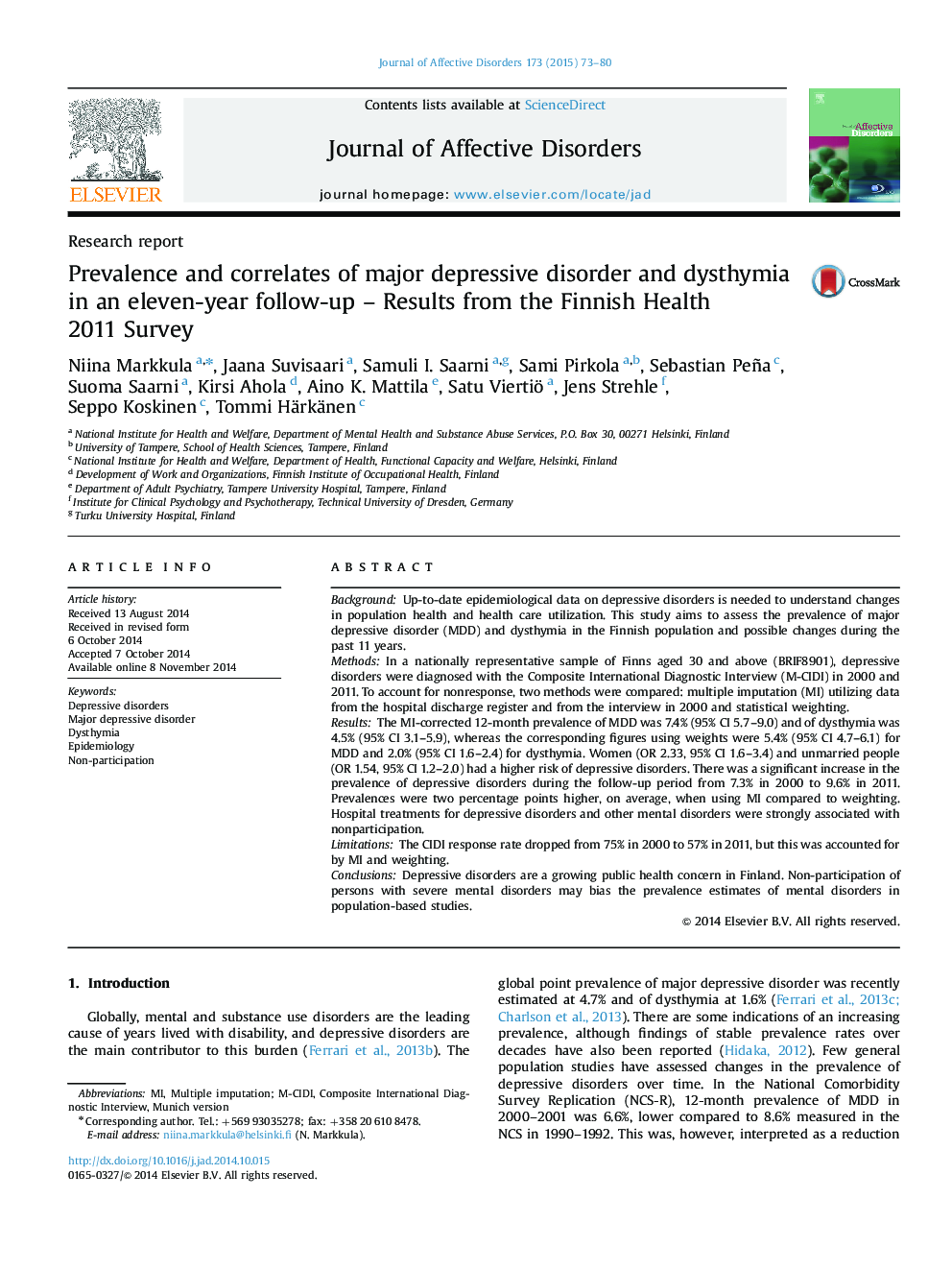| کد مقاله | کد نشریه | سال انتشار | مقاله انگلیسی | نسخه تمام متن |
|---|---|---|---|---|
| 6231842 | 1608152 | 2015 | 8 صفحه PDF | دانلود رایگان |
- We follow up a nationally representative community sample for eleven years.
- We use hospital register data in multiple imputation (MI) to account for missingness.
- Prevalence of depressive disorders increased over the 11-year follow-up period.
- Prevalence corrected by MI was 2% points higher than weighted prevalence.
- Nonparticipation of persons with mental disorders influences prevalence estimates.
BackgroundUp-to-date epidemiological data on depressive disorders is needed to understand changes in population health and health care utilization. This study aims to assess the prevalence of major depressive disorder (MDD) and dysthymia in the Finnish population and possible changes during the past 11 years.MethodsIn a nationally representative sample of Finns aged 30 and above (BRIF8901), depressive disorders were diagnosed with the Composite International Diagnostic Interview (M-CIDI) in 2000 and 2011. To account for nonresponse, two methods were compared: multiple imputation (MI) utilizing data from the hospital discharge register and from the interview in 2000 and statistical weighting.ResultsThe MI-corrected 12-month prevalence of MDD was 7.4% (95% CI 5.7-9.0) and of dysthymia was 4.5% (95% CI 3.1-5.9), whereas the corresponding figures using weights were 5.4% (95% CI 4.7-6.1) for MDD and 2.0% (95% CI 1.6-2.4) for dysthymia. Women (OR 2.33, 95% CI 1.6-3.4) and unmarried people (OR 1.54, 95% CI 1.2-2.0) had a higher risk of depressive disorders. There was a significant increase in the prevalence of depressive disorders during the follow-up period from 7.3% in 2000 to 9.6% in 2011. Prevalences were two percentage points higher, on average, when using MI compared to weighting. Hospital treatments for depressive disorders and other mental disorders were strongly associated with nonparticipation.LimitationsThe CIDI response rate dropped from 75% in 2000 to 57% in 2011, but this was accounted for by MI and weighting.ConclusionsDepressive disorders are a growing public health concern in Finland. Non-participation of persons with severe mental disorders may bias the prevalence estimates of mental disorders in population-based studies.
Journal: Journal of Affective Disorders - Volume 173, 1 March 2015, Pages 73-80
